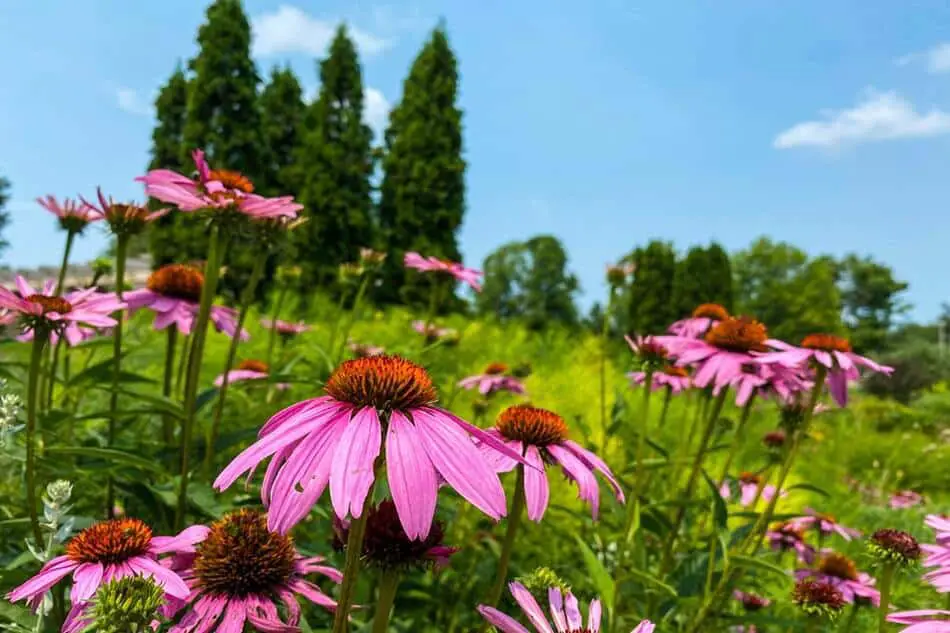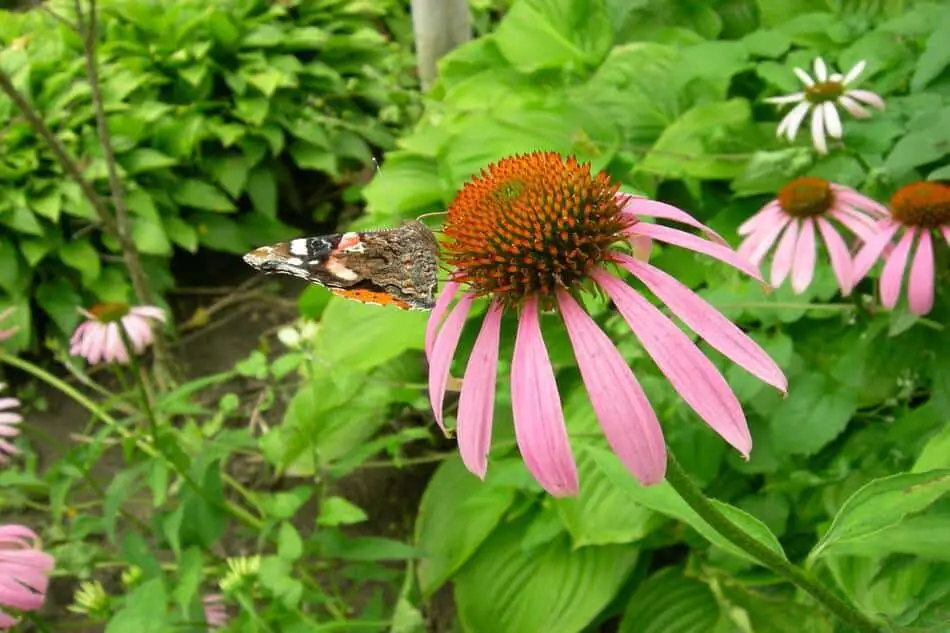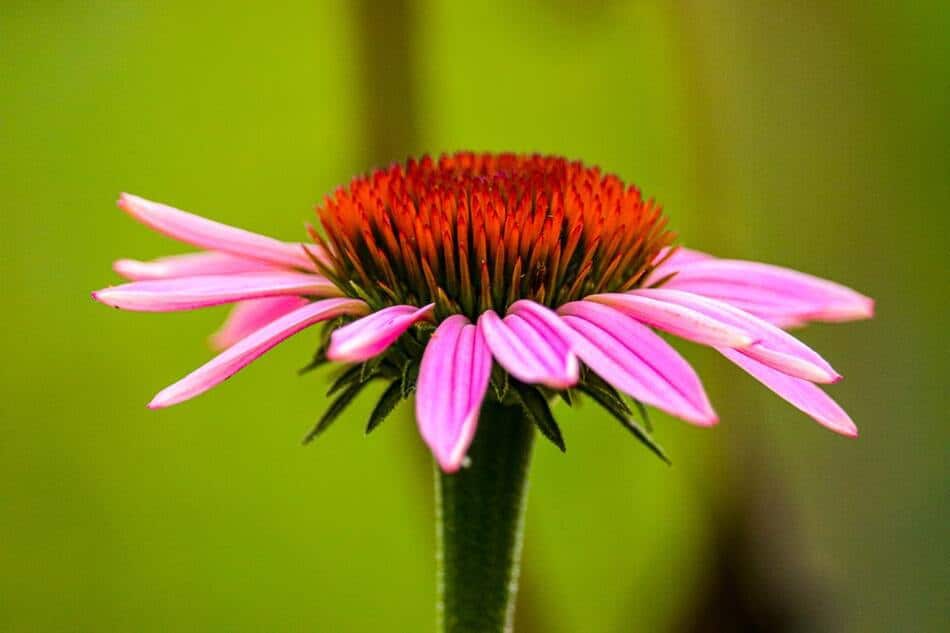Echinacea is a small, easy-to-grow flower that will brighten any area. This plant not only attracts pollinators, but it also makes for a lovely cut bloom! However, it requires care and regular pruning. So, learn with me how to prune echinacea.
I believe correct and careful pruning is pivotal for good echinacea development and blooming. Make sure you have quality and sharp pruning tools. Pick a specific time for pruning.
Echinacea has a special place in my heart and in my yard. There’s a lot to appreciate about these amazing, spiky blooms. They are drought tolerant and don’t mind bad soil.
They’re low-maintenance and will thrive in a variety of conditions, so they’ll provide years of beauty. They produce a lot of eye candy that adds an important pop of color to the landscape.
Echinacea makes lovely cut flowers, attracts beneficial pollinators, is a nutritious winter food for birds, and has therapeutic properties to aid our immune system.

How To Prune Echinacea?
Pruning your coneflowers is an important component of a health care program. Pruning the plants can create a new beginning, lush regrowth, and even more blooms in the summertime if done correctly.
If you’re wondering if you can prune your coneflowers, the answer is yes! You may read more about when, how, and why to prune below. Follow the guidelines to get ready for more gorgeous flowers in the summer.
Steps To Prune Echinacea
It’s critical to understand how to prune them correctly so you can get more blooms and robust development every year. When pruning your coneflowers, follow the instructions below.
- Select when you want to prune your shrubs.
- For trimming, use clean and sharp pruning shearing tools. Make sure you have a good set of pruning shears for cutting back your coneflowers.
- 1 inch to 4 inches of growth should be removed from the soil.
The height of your coneflower plant will vary, depending on the type you have and how established it is. A large, mature purple coneflower plant, for example, maybe plucked back to 4″ and rejuvenated. However, a little variety like prairie coneflowers can be cut all the way back to 1″. Plants that are newer will generally require closer trimming near the ground.
Cut off all of the spent blooms on a bloom stem at a distance of roughly ¼” above any new blossoms on the same stem if you’re deadheading your plants. If a plant is completely done blooming, cut it down to 4″ from the ground.
Essential Tips For Pruning Echinacea
Keep in mind the following tips in mind when pruning echinacea.
In early summer, trim the echinacea down to only one and a half of the length with pruning shears. This is a popular option that can result in late-blooming, but the plant will be more compact and stocky as a result.

The flowers will wilt or dry up over the summer and early fall, leaving behind a dried-out appearance. Use pruning shears to remove Deadhead coneflowers from roughly 1 and a half 4 inches further than the closest flower buds.
After the coneflowers have stopped blooming and withering or after a frost, clip them to the ground. You may also leave the seed heads in place over the winter as they will help to encourage self-seeding.
Why Do You Need To Prune Echinacea?
Confectionary coneflowers should be cut back or pruned every year to renew the plant and stimulate new growth, as well as maintain a tidy appearance.
Pruning is an essential job for all gardeners since it keeps their plants and gardens tidy.
When To Prune Echinacea?
When should you prune coneflowers? This depends on your gardening objectives and the way you trim.
If you don’t already know, the optimum time to prune your plants varies from region to region. Seasonal guidelines below can help you figure out when it’s best to use your scissors on your plant. Keep in mind that trimming may occur at any time throughout the growing season, especially during the dormant period.
Pruning Echinacea In Spring
Concretely, I often advise waiting until spring to prune native plants like coneflowers for a variety of reasons. First and foremost, these blooms provide critical nourishment to your local bird population throughout the fall and winter months.
If you have a big enough garden to allow for some naturalizing by native plants like coneflowers, you’re doing your local wildlife a favor by leaving the seeds to grow. While some gardeners may regard the spreading of plants as a negative, others see it as an advantage since free plants are provided.
Finally, seed heads add interest to your winter landscape when most plants are dormant.
In the end, whether you choose to prune your plants in the fall or the spring is a matter of personal preference and what you want for your garden. And, if, like me, you have an abundance of coneflowers in your yard, you may decide to trim some back in the fall and leave others for the spring.
Pruning Echinacea In The Fall And Winter Season
If you want to keep your garden clean throughout the winter, cut back your coneflowers after they become dormant in late fall or early winter.
The likelihood of the plant’s naturalization, or spreading, is decreased if you remove the dormant stalks and seed heads in the fall. Native prairie coneflower species (for example, Ratibida columnifera and Ratibida pinata), which spread readily via seed if you do not cut back on their seedheads, are a good example.
If you want to keep your garden neat and tidy, pruning in the fall is the way to go.
Deadheading The Echinacea
Pruning coneflowers may also be done in the summer! However, pruning coneflowers in the summer isn’t the same as it is at other times of the year.
When you prune in the summer, it’s more like “deadheading” and cutting for bouquets than it is in the fall or spring. You won’t want to cut your plant back as far as you would in the fall or spring.
In the summer, remove the flowers from your coneflowers so that they continue to bloom. Deadheading is frequently done to maintain the plant neat, prevent seed germination, and stimulate additional blooms on the plant.
Did you know that many coneflower varieties produce far more blooms when their petals are cut? It’s true: cutting your flowers indoors may frequently result in additional blossoming throughout the summer. So grab your scissors and start celebrating those gorgeous flowers both inside and out.
Bottom Line
There you have it! That is how simple is to prune echinacea. All you need to do is to follow the 3 steps that I have stated above. Do not forget to share your experience with me!
It Is Always Good To Read More!
Learn how to make peppermint oil spray!
Using Lavender Oil for Bed Bugs.
How to distill Lavender Oil?
Know about the smell of lavender oil!
What blends well with Peppermint Essential Oil?

